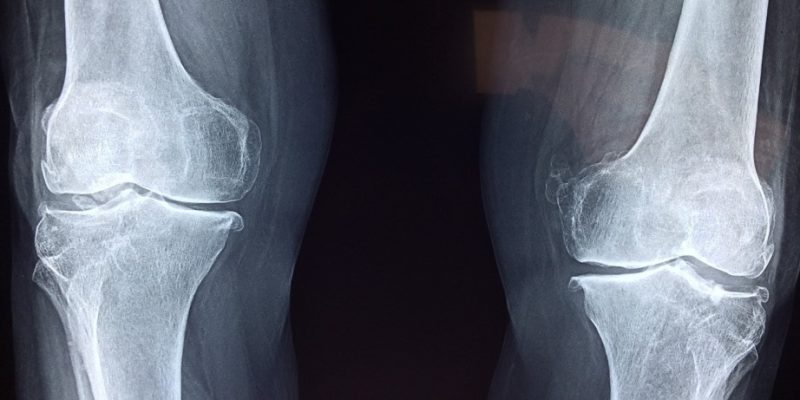
Addressing Common Misconceptions About Family Chiropractic Health Services
When it comes to caring for your family’s health, you want to make the best decisions possible, but it can be difficult to know what is true and what is not. Chiropractic care is one of those topics that frequently creates conflicting opinions. You might have heard that it’s only for adults with back pain or that once you start going, you can’t stop. Most of the family care chiropractic addresses these questions all the time! That’s why we’re here to clear things up.
In this post, we’ll debunk common myths about family chiropractic care to help you feel confident about its benefits for your loved ones.
Understanding the Need for Family Chiropractic Health Services
Chiropractic care isn’t just for people with back problems; it’s also a preventative measure to improve your family’s overall health and wellness. Our bodies go through a lot every day, from sitting at a desk to carrying children, dealing with stress, and recovering from sports and activities. These habits can result in poor posture, muscle tension, and misalignment.
Family chiropractic care focuses on keeping the spine and nervous system in balance, which can help improve mobility, reduce pain, promote better sleep, and even boost the immune system. Family chiropractic care offers natural, gentle solutions for all stages of life, from helping your child grow strong to relieving pregnancy discomfort and supporting active seniors.
Top 9 Myths About Family Care Chiropractic
Let’s look at nine common myths about family chiropractic health services and the truth behind them.
Myth #1: Chiropractic Care Is Only for Back Pain
A chiropractor treats a wide range of conditions, but back pain is one of the most common ones. Since the spine and nervous system affect many bodily processes, chiropractic care focuses on maintaining these systems in good health.
The Truth:
Additional benefits of chiropractic care include:
- Pain in the neck
- Migraines and headaches
- Sciatica
- Correcting posture
- Reducing stress
- Muscle and joint discomfort
- Preventive health
Family care chiropractic service provides thorough treatment and prevention plans.
Myth #2: Children and Infants Shouldn’t Get Chiropractic Care
This is one of the most persistent myths and the most important to disprove. Physical stress is experienced by children as well, particularly during growth spurts, sports activities, and even birth. Chiropractic adjustments for children are gentle, safe, and designed specifically for their developing bodies.
The Truth:
Pediatric chiropractic care may assist with:
- Colic or digestive issues
- Sleep disturbances
- Ear infections
- Torticollis
- Developmental milestones
- Focus and behavioral issues
These family chiropractic health services are intended to improve children’s health in natural, non-invasive ways.
Myth #3: Chiropractic Adjustments Are Painful or Dangerous
Some people are afraid of the “cracking” sound associated with chiropractic adjustments. In reality, that sound is just gas being released from joints, similar to cracking your knuckles. Most patients find adjustments relieving, not painful.
The Truth:
- Techniques vary from firm manual adjustments to instrument-assisted or low-force options.
- Chiropractors adapt care based on age, comfort level, and condition.
- Many people experience improved mobility and less pain after just one session.
Myth #4: Once You Start, You’ll Have to Keep Going Forever
This myth is most likely the result of many patients continuing chiropractic care because they feel better instead of needing it. Just like exercise or healthy eating, consistency supports long-term wellness, but the decision is yours.
The Truth:
- Chiropractic treatment plans are customized to your goals: pain relief, recovery, or wellness.
- Discuss clear timelines and reassess progress regularly.
- You’re never locked into long-term care; you stay because it works.
Myth #5: Chiropractic Isn’t Based on Science
Chiropractic care is a licensed, research-supported healthcare field. Licensed chiropractors complete extensive education (including anatomy, neurology, and diagnostics) and must be board-certified.
The Truth:
- Numerous studies support chiropractic for low back pain, headaches, posture issues, and more.
- Chiropractic techniques continue to evolve with current research.
- Chiropractors often work alongside medical doctors, physical therapists, and other providers.
Myth #6: Pregnant Women Should Avoid Chiropractic
Pregnancy can bring spinal pressure, pelvic imbalance, and joint pain. Chiropractic care, especially techniques like the Webster Technique, can safely support comfort, alignment, and optimal fetal positioning during pregnancy.
The Truth:
- Prenatal adjustments reduce round ligament pain, back pain, and sciatica.
- Chiropractic may help with shorter, more comfortable labor.
- Postpartum care can aid recovery and correct alignment changes after birth.
Myth #7: It’s Not “Real” Healthcare
Chiropractic care is recognized by health systems, insurance companies, and regulatory boards across the U.S. and worldwide. It’s a non-invasive, drug-free approach to health that complements conventional medicine, not replaces it.
The Truth:
- Chiropractic is part of many integrative care teams.
- They use diagnostic tools, health histories, and functional assessments.
- This helps you reduce the need for medications or surgery in many cases.
Myth #8: Everyone Gets the Same Adjustments
No two family chiropractic care plans are identical. Infants, athletes, seniors, and pregnant women all need different approaches. Adjustments are based on thorough evaluation, not a one-size-fits-all formula.
The Truth:
- Chiropractors use various techniques tailored to age, body type, and health needs.
- Your adjustment may include soft tissue work, stretching, or mobilization.
- They track your progress and adjust care accordingly.
Myth #9: You Only Need Chiropractic When You’re in Pain
Pain is often a late symptom of underlying dysfunction. Waiting for pain to appear may mean you’ve already had posture or alignment issues for weeks or months. Many families choose chiropractic as part of their preventive care.
The Truth:
- Regular adjustments support nervous system function.
- Chiropractic may help boost immunity, improve sleep, and reduce stress.
- It’s easier to prevent issues than to treat them later.
Final Thoughts
Family chiropractic health services go far beyond back pain; they’re about helping people of all ages live healthier, more balanced lives. Whether you’re a new parent, an active senior, or someone looking for a natural path to wellness, chiropractic care can offer gentle, effective support.
Choose a family care chiropractor who will give you the attention you deserve during your journey. They will explain everything about chiropractic care for families and give you the confidence to help your family thrive.






















